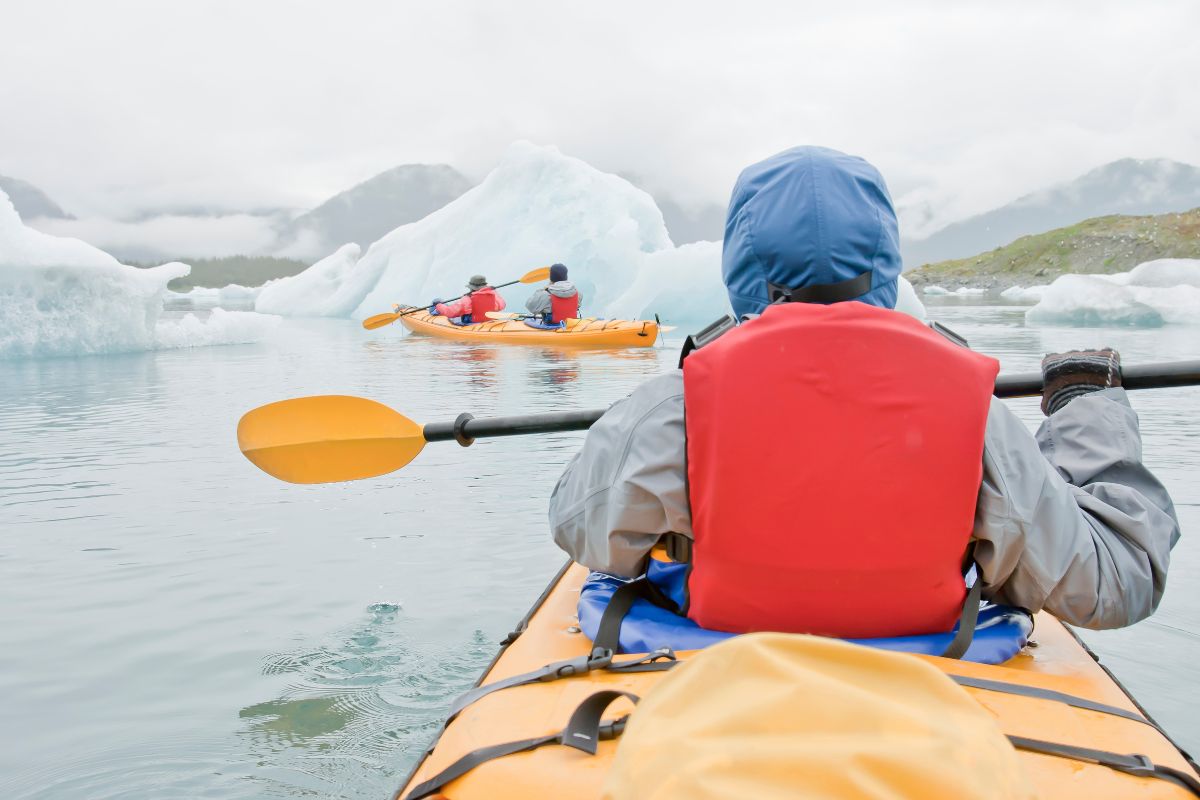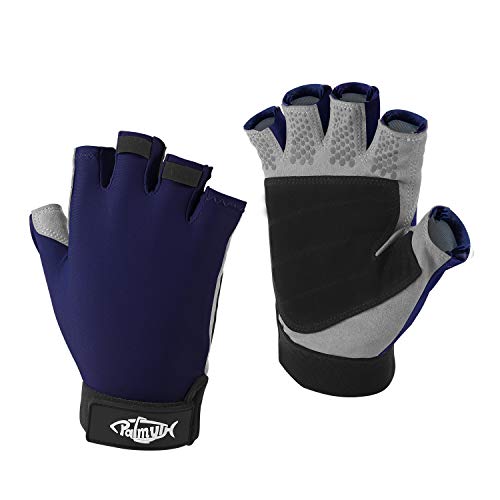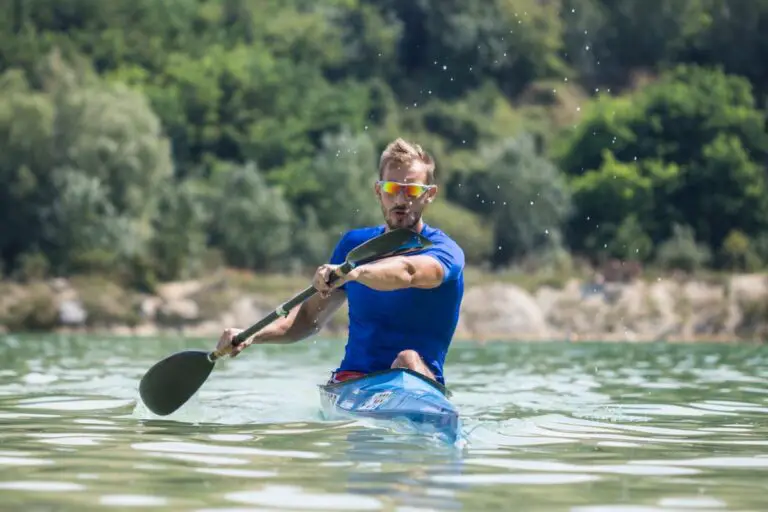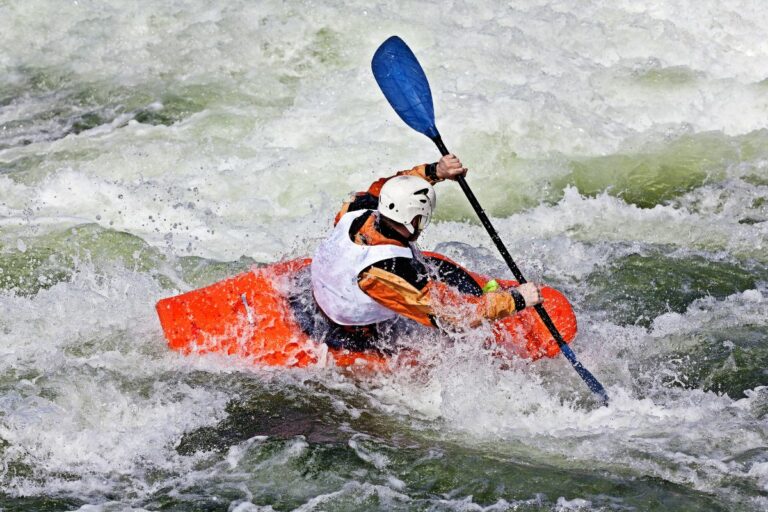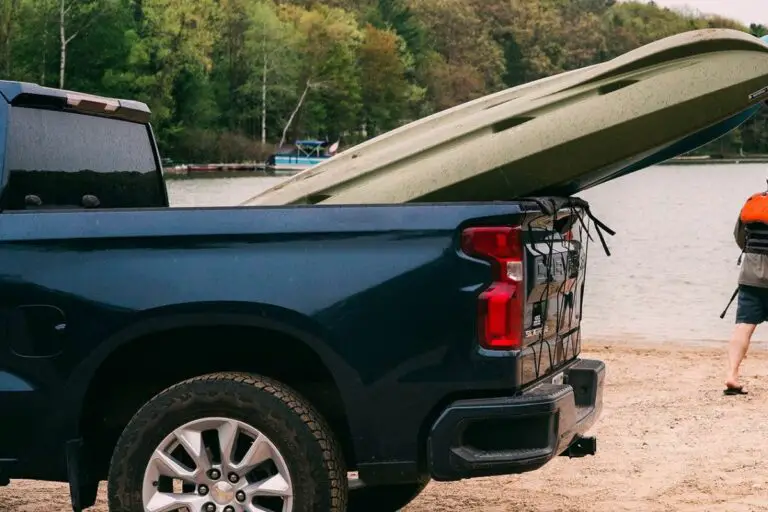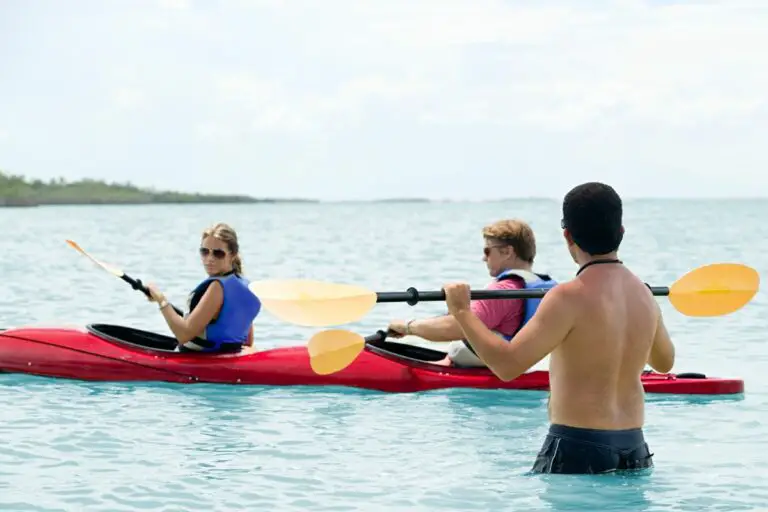Winter Paddling: Can You Kayak When It’s Cold?
When it comes to kayaking, weather plays a significant role in determining the type of experience you will have. Some kayakers prefer calm and sunny conditions, while others enjoy the challenge of rough conditions.
Kayaking in colder temperatures, in particular, can present unique challenges that require careful preparation. So, can you kayak when it’s cold?
You can kayak when it’s cold as long as you are aware of the risks involved and take proper precautions to stay safe and warm. It’s important to wear multiple layers of weather-appropriate clothes. It’s also recommended to kayak with a group and avoid areas with strong currents or ice.
Keep reading to learn about the risks of kayaking in cold temperatures and what you can do to stay warm and safe.
Table of Contents
Can You Kayak When It’s Cold?

While kayaking is mostly considered a summer activity due to the warmer weather and longer daylight hours (although you can still kayak at night), you can still kayak when it’s cold.
However, kayaking in colder temperatures can be challenging, so you need to be aware of the risks involved and take the necessary precautions to stay safe and warm.
What Temperature Is Too Cold to Kayak?
Any temperature below 60 degrees Fahrenheit is considered too cold to kayak without proper protective gear. Even if the air temperature is warm, cold water can be extremely dangerous.
When the water temperature drops below 40 degrees Fahrenheit, it can cause a rapid loss of body heat and lead to hypothermia. It can also affect muscle function and make it harder to grip the paddle.
The ideal temperature for kayaking depends on a number of factors, such as personal preference, experience level, and type of kayaking activity. However, in general, most kayakers prefer to paddle in temperatures between 60 and 80 degrees Fahrenheit.
The Risks of Kayaking in Cold Temperatures
As mentioned before, kayaking in cold temperatures comes with several risks, and it’s important to be aware of these risks and take steps to minimize them.
Here are some of the risks to keep in mind:
- Hypothermia: Hypothermia is a serious medical condition that occurs when the body loses heat faster than it can produce it. It can occur quickly in cold water and can be life-threatening.
- Symptoms of hypothermia include shivering, confusion, drowsiness, and loss of coordination.
- Cold shock: Cold shock is a physiological response to cold water immersion, which can cause a sudden gasp reflex, hyperventilation, and even drowning.
- The risk of cold shock is highest within the first few minutes of immersion in cold water.
- Reduced mobility and dexterity: Cold temperatures can make it difficult to move and manipulate your kayak. Your muscles can become stiff, making it hard to paddle, rescue yourself, or climb back into your kayak.
- Ice formation: In very cold temperatures, ice can form on the surface of the water, making it difficult to maneuver your kayak. Ice can also make the surface of the water uneven and unstable.
- Strong currents: Cold water can cause stronger currents, making it difficult to paddle and maneuver your kayak.
- Reduced visibility: Cold temperatures can cause fog, which can reduce visibility and make it difficult to navigate.
By the way, I have a complete guide on when you should not go kayaking here that you can check to learn about all the conditions that make it either very dangerous or very difficult to go kayaking.
How to Prepare for Kayaking When It’s Cold?

Kayaking in cold temperatures requires careful preparation to ensure you’ll be warm, comfortable, and, most importantly, safe.
So, let’s take a closer look at how you can prepare for kayaking when it’s cold.
What to Wear When Kayaking in Cold Temperatures?
When kayaking in cold temperatures, you need to wear weather-appropriate clothing that will help you stay warm and dry.
Here are some tips on what to wear when kayaking in cold temperatures:
- Base layer: Wear a moisture-wicking base layer to help regulate your body temperature and keep you dry.
- Choose a synthetic material, like polyester or nylon, or natural material, like merino wool.
- Insulating layer: Wear an insulating layer, such as fleece or wool, to trap heat and keep you warm.
- Outer layer: Wear a waterproof and windproof outer layer, like a dry suit or a dry top and dry pants, to protect you from wind, rain, and splashing water.
- Look for materials like Gore-Tex or HyVent, which are breathable and will allow sweat to escape.
- Footwear: Wear waterproof boots to keep your feet warm and dry. If you prefer to wear shoes, choose ones with a good grip and a waterproof and breathable membrane.
- Gloves: Wear neoprene or waterproof gloves to keep your hands warm and dry. Look for gloves with good grip and dexterity to help you paddle.
- Headwear: Wear a hat or a hood to keep your head and ears warm. Choose a material that will dry quickly, like fleece or wool.
What Clothes to Avoid When Kayaking in Cold Temperatures?
You should avoid wearing some clothes when kayaking in cold temperatures, as they can be uncomfortable or even dangerous. These include:
- Cotton clothing: Avoid wearing cotton clothing as it absorbs moisture and takes a long time to dry, making you feel cold and uncomfortable.
- Loose-fitting clothing: Don’t wear loose-fitting clothing as it can get caught on the kayak or other equipment, increasing the risk of injury.
- Bulky clothing: Avoid wearing bulky clothing that restricts your movement and makes it difficult to paddle efficiently.
- Non-waterproof clothing: Don’t wear non-waterproof clothing as it can get wet and make you feel cold, increasing the risk of hypothermia.
- Sandals or open-toed shoes: Avoid wearing sandals or open-toed shoes as they provide little protection from the cold water and can lead to foot injuries.
- Heavy jewelry or accessories: Don’t wear heavy jewelry or accessories that can get caught on the kayak or other equipment, increasing the risk of injury.
What to Pack When Kayaking in Cold Temperatures?
There are some essential items you need to pack when kayaking in cold temperatures, such as:
- Extra clothes: Bring extra clothing in case you get wet or need additional insulation.
- Emergency equipment: Carry a whistle, a flashlight, and a first aid kit with you in case of an emergency. Consider carrying a personal locator beacon (PLB) or a satellite phone in case you need to call for help.
- Warm drinks and food: Bring warm drinks and food to help keep you warm and nourished during your trip. Pack a thermos of hot chocolate or soup, and bring high-energy snacks like nuts, granola bars, and fruit.
- Navigation equipment: Bring a map and a compass or a GPS device to help you navigate and stay on course.
- Dry bag: Pack all your gear in a dry bag to keep it dry and protected from water.
Safety Tips for Kayaking When It’s Cold
Now that you know what to wear and what to pack, here are some tips you can follow to stay safe out on the water:
- Always wear a Personal flotation device (PFD) to keep you afloat and protect you in case of an emergency.
- Choose a PFD designed for cold water paddling, with a high buoyancy rating and insulation to help keep you warm.
- Always check weather conditions before heading out on a kayaking trip, and be prepared to cancel or postpone if the conditions are too unsafe.
- Double-check your kayak and equipment before heading out to ensure you have what you need and that everything is in good working condition.
- Plan your route and try to avoid areas with strong currents or ice formations.
- Additionally, let someone know your itinerary before heading out. This will ensure that someone knows where you are and can call for help if you do not return when expected.
- Kayak with a partner or group to increase safety, as you can watch out for each other and help in case of an emergency.
- Avoid drinking alcohol before or during your kayaking trip, as it impairs judgment and increases the risk of hypothermia.
- Learn the signs and symptoms of hypothermia and take immediate action if you or anyone in your group shows any signs of hypothermia.
By following these tips, you can reduce the risk of kayaking in cold temperatures and enjoy a safe and comfortable kayaking experience. Remember to know your limits and to always prioritize safety, especially if you are new to kayaking or have limited experience.
Kayak your way to Freedom
- On a budget? Check out the best fishing kayaks under $500 here and the best Fishing Kayaks under $1,000 here. Or Check the best Cheap Kayaks here.
- Going fishing? Here are the best Ocean fishing kayaks, and here are the best River Fishing Kayaks.
- You can also find the best Fly Fishing Kayaks here and the best Bass Fishing Boats here.
- A bit experienced? Check out the best modular kayaks here and the best tandem fishing kayaks here.
- Looking for something special? Check out my favorite Ducky kayaks here.
- Navigate your way with these awesome and beginner-friendly Kayak compasses.
- Going Hunting? These Duck hunting kayaks will give you an unfair advantage!
- Have a need for speed? These motorized kayaks will get you moving.
- Protect yourself from the sun with these Kayak shades, and make your kayak more comfortable with these Kayak seats.
- Keep your feet dry and warm with these superb Kayaking shoes.
- Going Kayaking in cold water? Stay warm with these Kayaking gloves.
- Paddle Less, Fish More with the Best Kayak Motors
- Looking to get a trolling motor on your kayak? Check out the best kayak trolling motor mounts here.
If you like this article, please share it or pin it, you can find the share buttons below. We will really appreciate it ❤️

